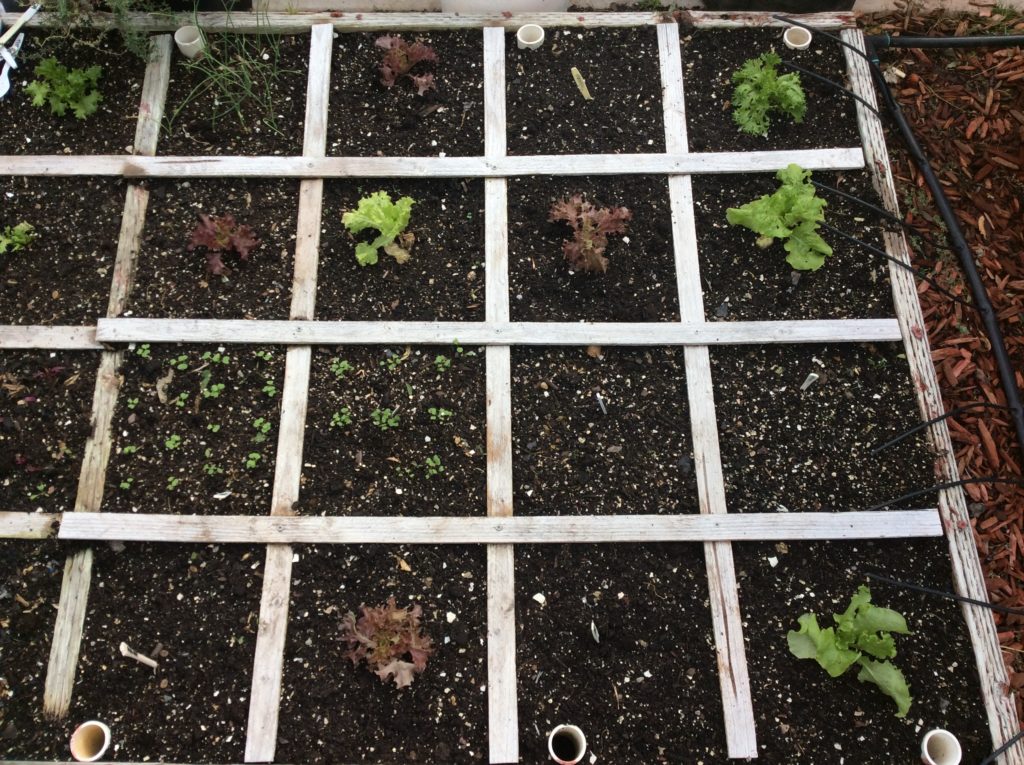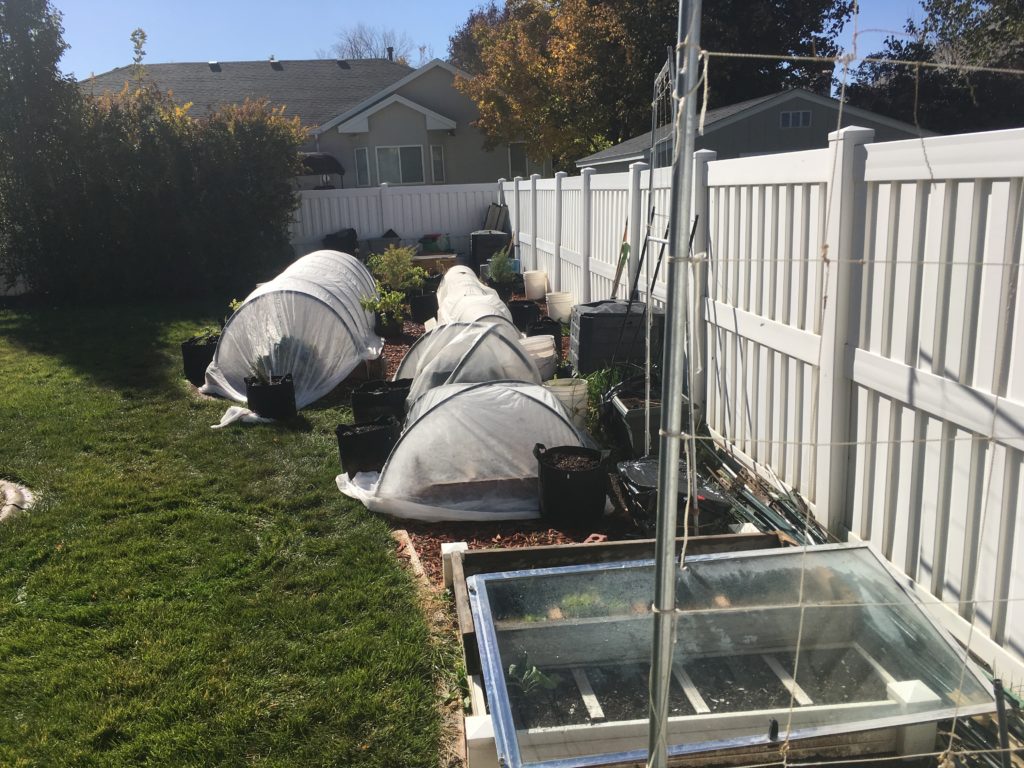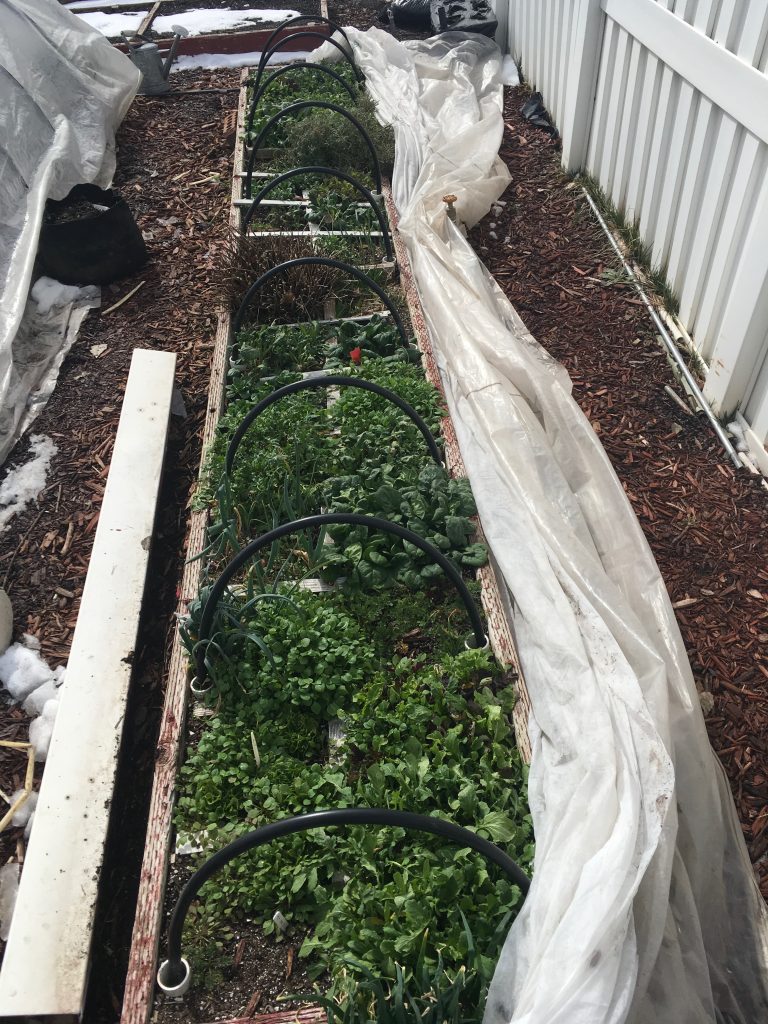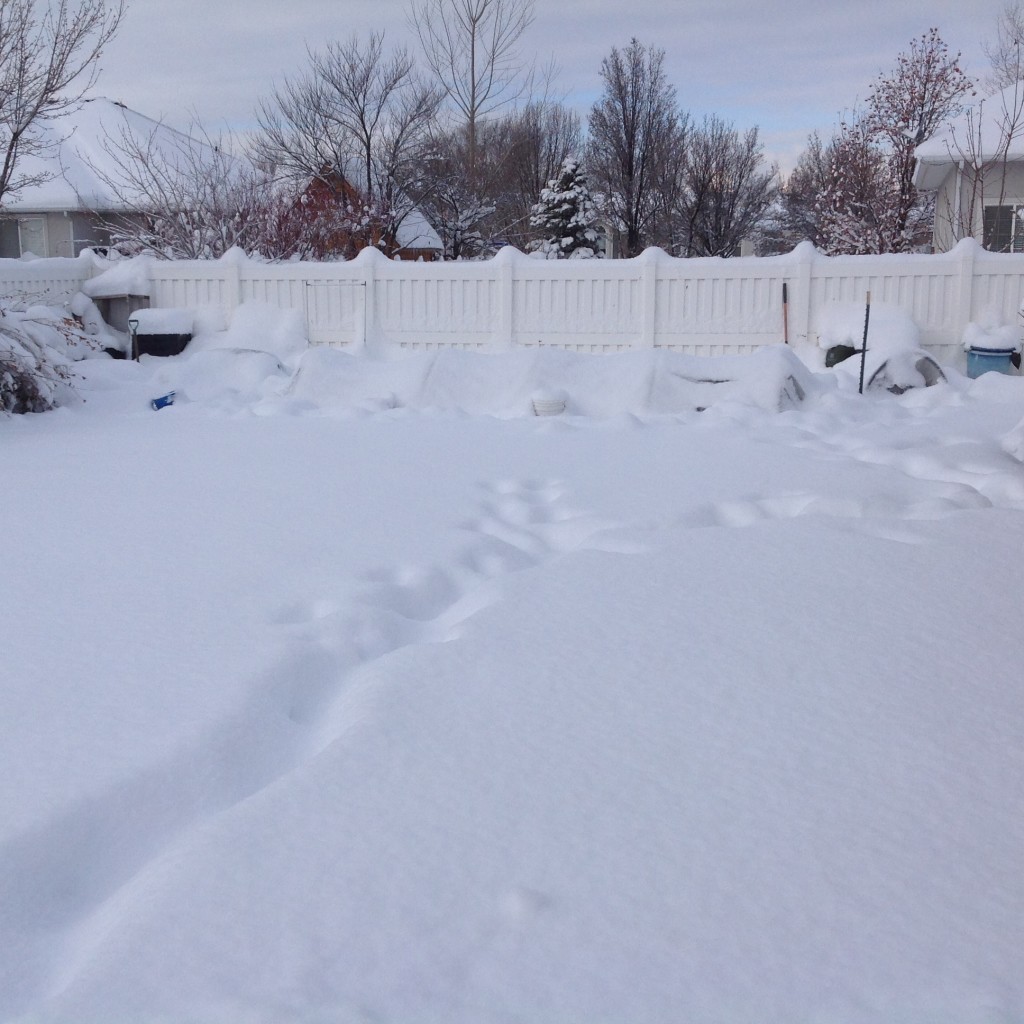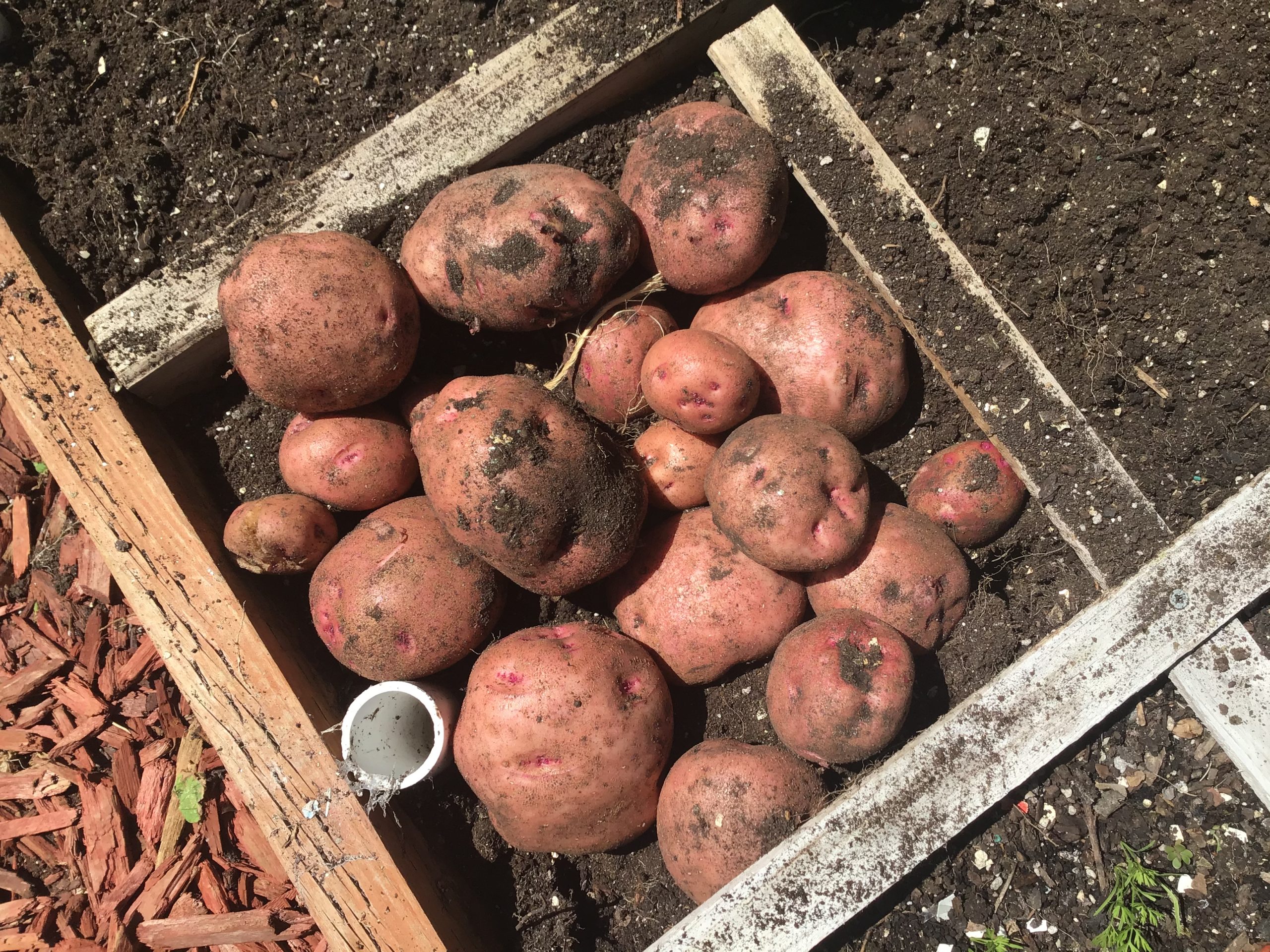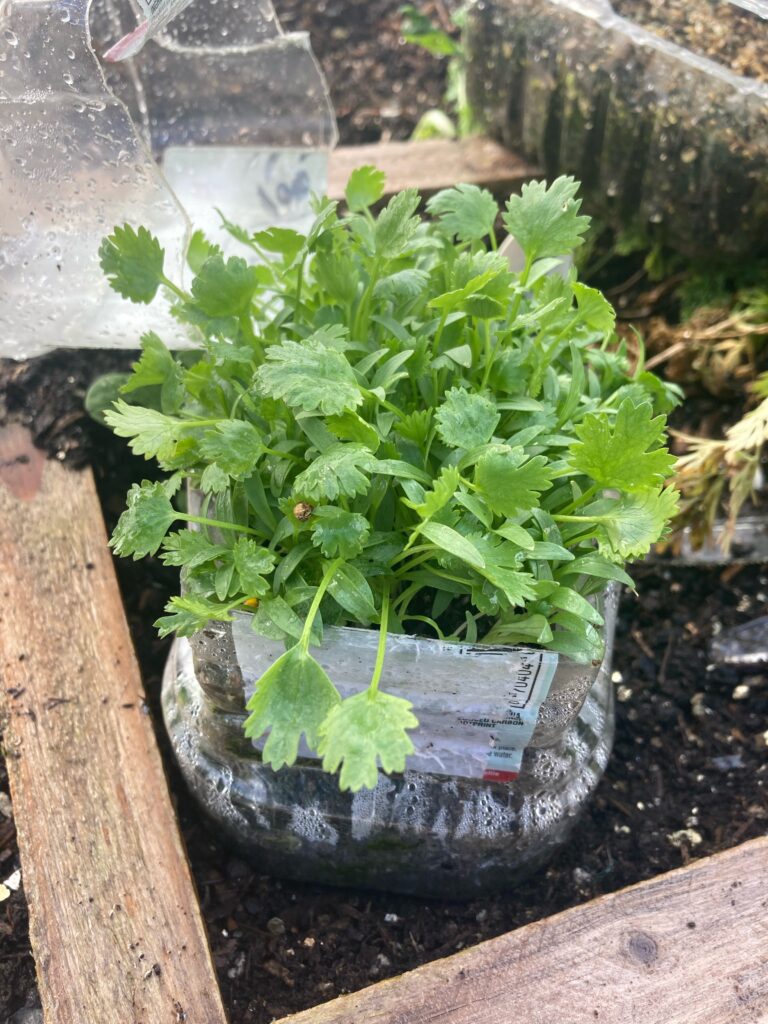 First put together 10 weeks ago, this cilantro is now ready to be separated and placed into squares. So far I’ve put them in 7 squares-28 plants, with about 5-7 more squares to go. Winter sowing is such a good practice. I took an empty olive oil container, cleaned it out, and then cut it around the mid-line. After filling it with moist soil, I added the cilantro seed, watered in again gently, closed the container with scotch tape, removed the top cap, and then placed it in my gardens which are covered with plastic and spun bound fabric.
First put together 10 weeks ago, this cilantro is now ready to be separated and placed into squares. So far I’ve put them in 7 squares-28 plants, with about 5-7 more squares to go. Winter sowing is such a good practice. I took an empty olive oil container, cleaned it out, and then cut it around the mid-line. After filling it with moist soil, I added the cilantro seed, watered in again gently, closed the container with scotch tape, removed the top cap, and then placed it in my gardens which are covered with plastic and spun bound fabric.
There have been days where I pulled the plastic back to vent because it can really get warm under covers. I’ve done no work with this container. Try this easy technique next winter to enjoy an early spring garden. The seeds just know when it’s time to come up. One of the best things about winter sowing is you don’t have to worry about hardening your new plants off. They’ve been living in the very cool environment from the beginning.
All that’s left for me to do is to separate the seedlings and put them in the squares of the SFG. Four plants per square. So far I’ve planted 7 squares or 28 seedlings with a lot more to go. By the time the neighborhood starts to think about planting their gardens in a month (still too early unless they’re ready to protect from more snow/freezing temperatures), I’ll have begun harvesting cilantro. I’ve already been enjoying over wintered carrots, parsnips, tatsoi, mache, claytonia, spinach, mizuna, and salad greens.
For those who may be interested, I have a beginning square foot garden class at my home coming up in a couple of weeks. Space is limited. See details here.
